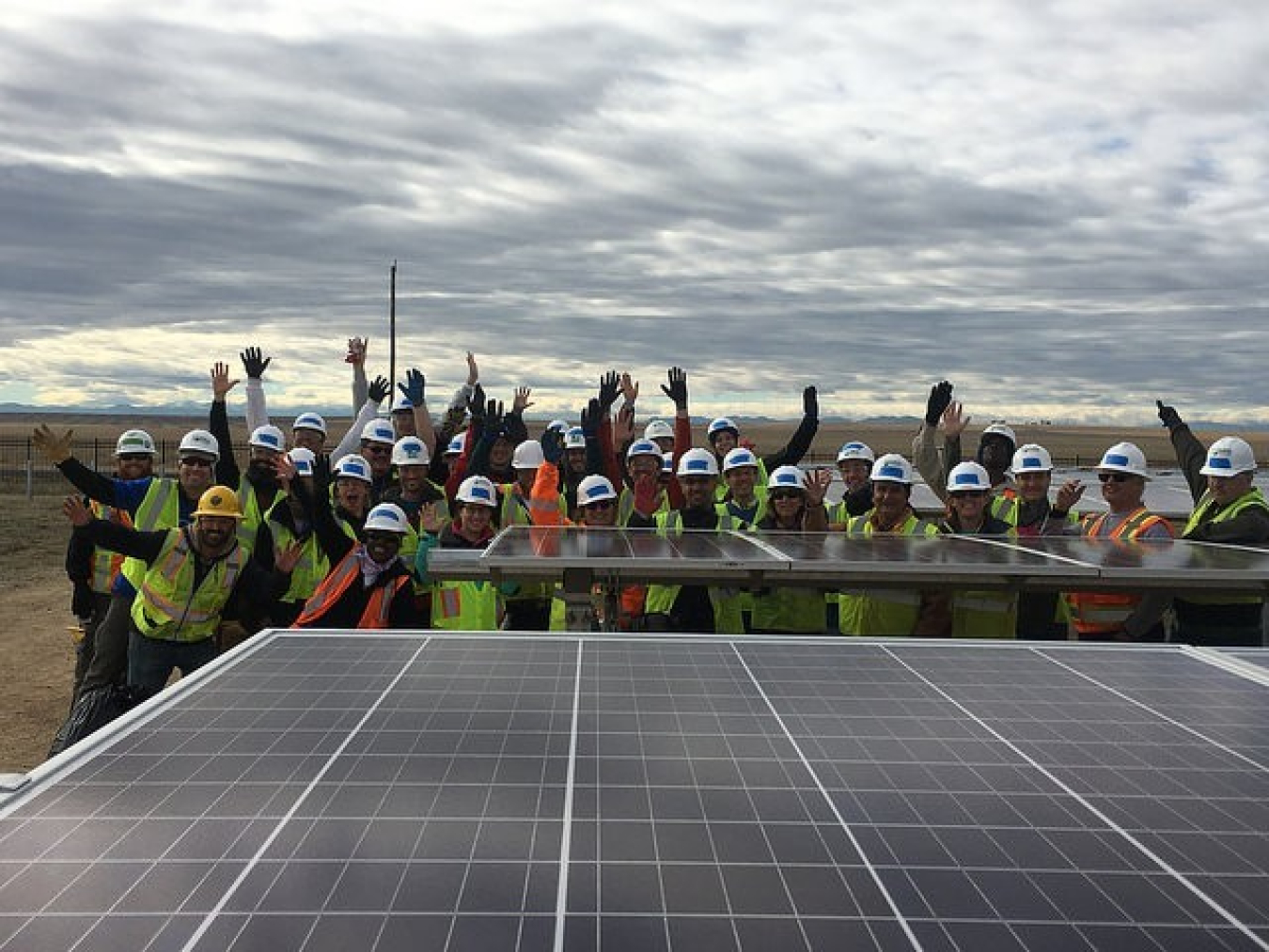“Solar in Your Community Challenge” Brings Solar—and Savings—to More Americans
February 20, 2020
Members of Colorado’s CARE Project, led by the Denver Housing Authority (DHA), winners of the Solar in Your Community Challenge. Photo courtesy of DHA.
Solar energy adoption is increasing across the country, but some communities have easier access to solar than others, due to the high and up-front costs of photovoltaic (PV) systems. Low- and moderate-income (LMI) communities have a particularly tough time attaining the benefits of affordable solar energy. These communities often have trouble gaining access to the solar investment tax credit (ITC) due to lack of capital or credit, which can make their solar investments 30% more expensive than those that incorporate the ITC.
The U.S. Department of Energy Solar Energy Technologies Office (SETO) is working to break down these barriers to affordable solar energy through its soft costs funding programs—and prize competitions like the $5 million Solar in Your Community Challenge.
The Solar in Your Community Challenge, which began in May 2017, encouraged fresh approaches to making affordable solar energy more easily available to LMI communities, nonprofits, faith-based organizations, and state and local governments. It drew a lot of interest, with 170 teams across 40 states, the District of Columbia, Puerto Rico, and Guam.
The challenge for the teams was twofold: expanding solar access to underserved groups while proving that their business models could be widely replicated and adopted. Two years later, SETO announced the winning teams, which together provided at least 1,200 LMI households and 18 nonprofits access to solar—and, on average, lowered their energy bills 15% to 25%. Since one of the requirements of the challenge was that the models had to be replicable, these results could mean a significant expansion of solar access to underserved communities and big savings in electricity bills in the future.
The $500,000 grand prize was awarded to Colorado’s CARE Project, led by the Denver Housing Authority (DHA), a public housing authority that provides affordable housing to more than 26,000 LMI individuals representing more than 10,000 families.[1] DHA developed a new model for expanding solar access to residents of its multifamily affordable housing buildings. Its model is the first community solar project to be owned and operated by a housing authority. DHA worked with its local utility, Xcel Energy, to allocate benefits to housing subscribers by using a power purchase agreement model developed with project partners. This structure allowed DHA’s tenants to access solar energy without having to fund any of the up-front construction costs, which meant lower energy costs for both the customer and DHA. Essentially, DHA acted as the conduit for them to gain access to the 30% savings provided by the ITC.
Because the Denver Housing Authority was the guarantor of the PPA, this team eased potential credit and financing concerns that can make LMI projects difficult to implement. DHA and its partners installed 2 megawatts of solar that benefited 764 LMI households, which will save customers nearly $3 million on their energy bills, or about 20%, over 20 years. If expanded to other housing providers, these innovations in solar project financing could make solar energy more accessible and affordable. DHA has 11,000 housing units,[2] so the potential energy savings of this model in Denver and across Colorado is significant. In addition, because there are more than 3,300 housing authorities in the country, this model could be deployed in other states and jurisdictions. If brought to scale, these innovations in project financing could make solar energy accessible to 30 million LMI households, with a solar market potential of nearly 200 gigawatts of energy load.
SETO is working to test and prove out more community solar models for residents of multifamily affordable housing units through its recently launched National Community Solar Partnership—a coalition of stakeholders aiming to expand access to affordable community solar to every American household by 2025. SETO broadly defines community solar to include any solar project or purchasing program, within a geographic area, in which the benefits flow to multiple participants (individuals, businesses, nonprofits, etc.).
These and other successes achieved through the Solar In Your Community Challenge show how tackling financing and other issues can lower the non-hardware costs of solar deployment and make solar accessible to more communities. This list of resources can help facilitate solar project development. Learn more about the soft costs of solar energy.

